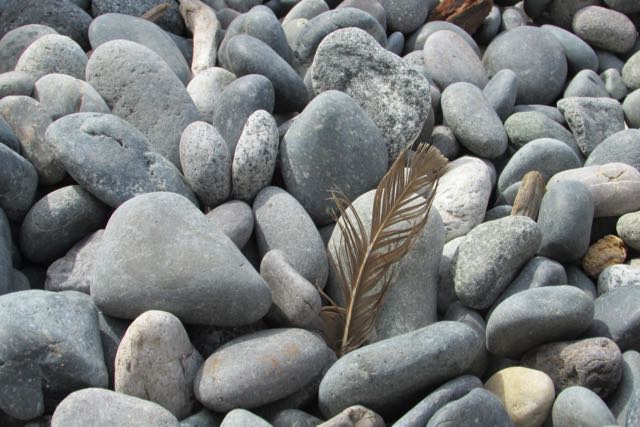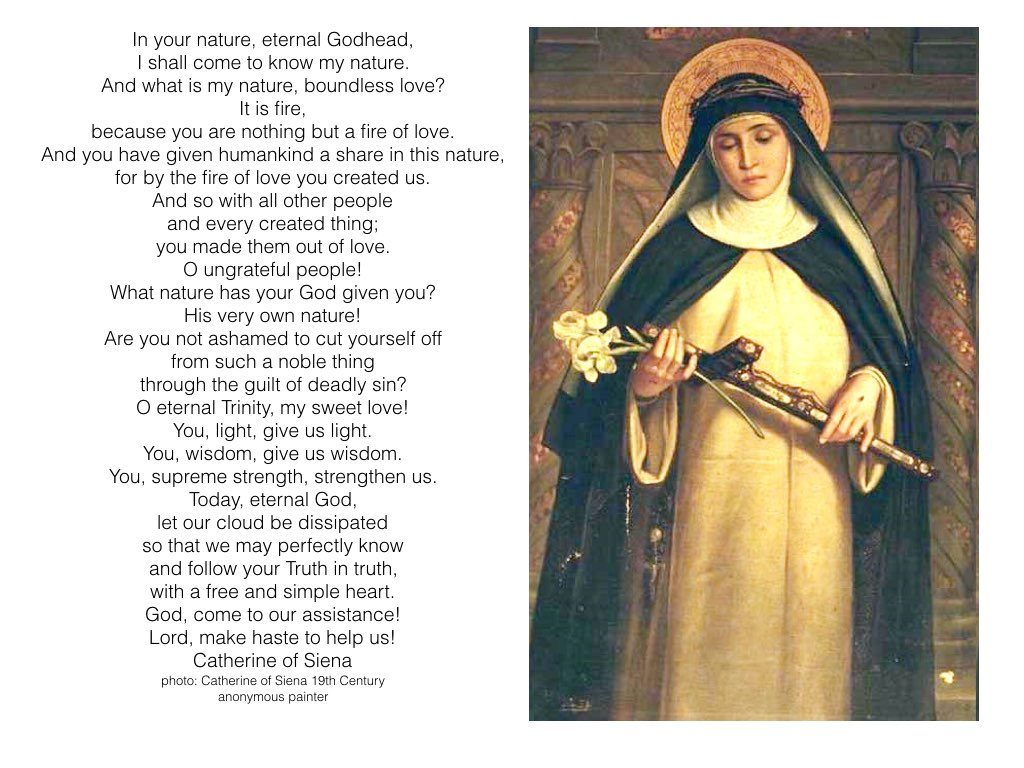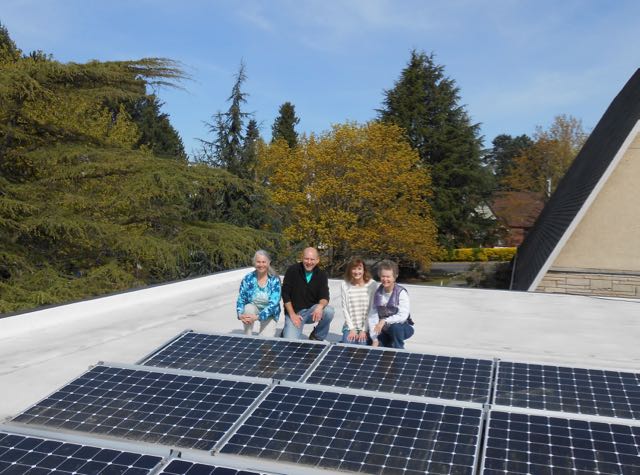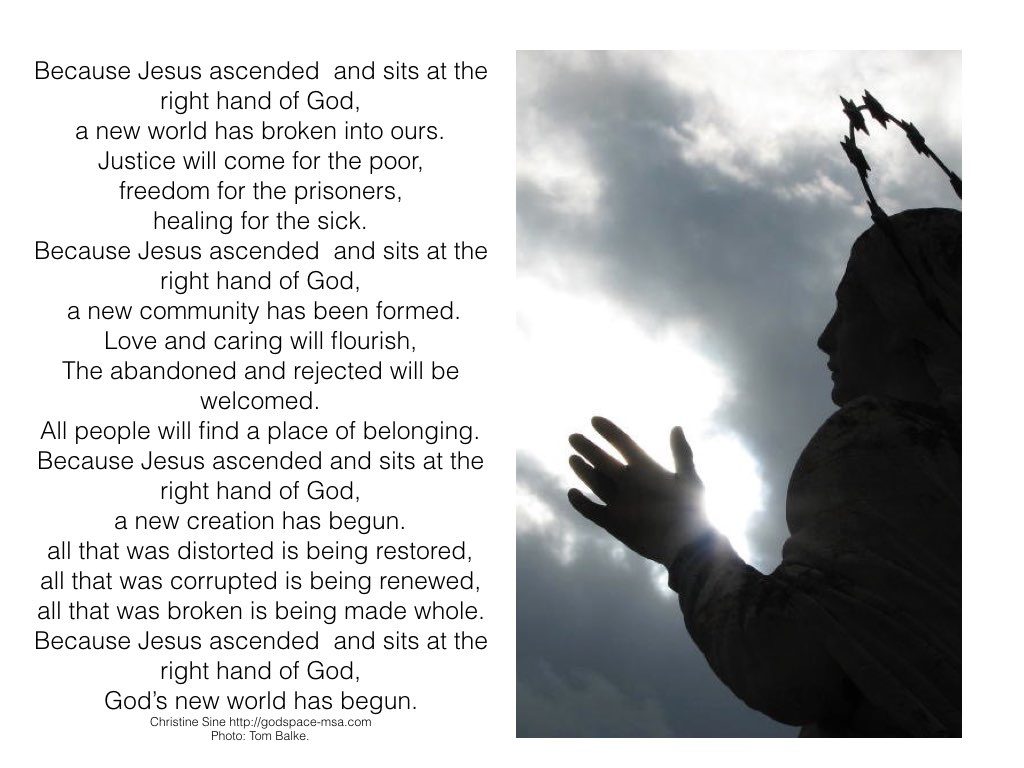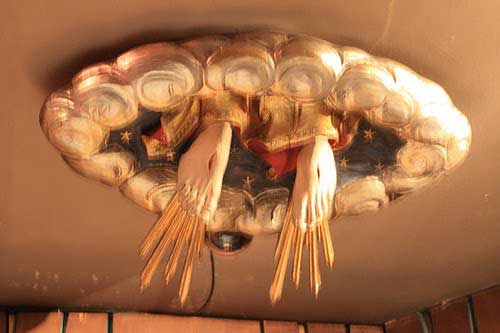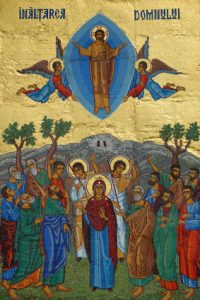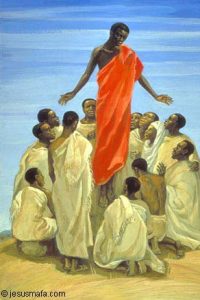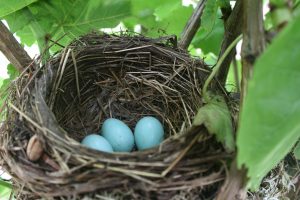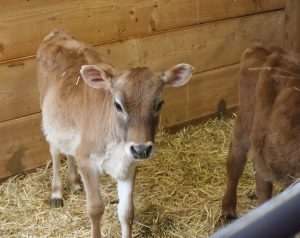The Inhabit conference is over. This special gathering always feels like an extended family celebration. This year MSA team members hosted lunches on creative worship and table justice, facilitated labs on creative spirituality and new changemakers. We also hosted keynote speaker Shane Claiborne and participated in many lively discussions.
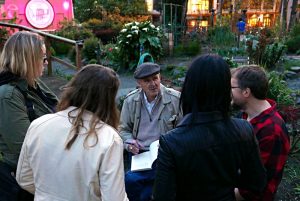 In conjunction with the Inhabit conference, we successfully launched Tom’s new book, Live Like You Give a Damn! Join the Changemaking Celebration. What a privilege to have friends from Australia, New Zealand and Canada join us for the occasion. Our pre-ordered books have all been sent, but Live Like You Give a Damn! is still available through our website at the cheapest price around. We are planning other launch parties around the U.S. and overseas in the next several months. If you would like to host a special new changemakers party in your city, please let us know.
In conjunction with the Inhabit conference, we successfully launched Tom’s new book, Live Like You Give a Damn! Join the Changemaking Celebration. What a privilege to have friends from Australia, New Zealand and Canada join us for the occasion. Our pre-ordered books have all been sent, but Live Like You Give a Damn! is still available through our website at the cheapest price around. We are planning other launch parties around the U.S. and overseas in the next several months. If you would like to host a special new changemakers party in your city, please let us know.
On Godspace we introduced a number of new authors for Earth Day – Randy Woodley, Nurya Love Parish and Lisa Graham McMinn, and we are currently adding new resource lists for Ascension Day and Pentecost. We have also started a special new feature author of the month, that will highlight books and authors who are concerned, as we are, about spirituality, sustainability and community. In May we will highlight Lisa Graham McMinn’s new book, To the Table: A Spirituality of Food, Farming, and Community, and in June Keith Anderson’s A Spirituality of Listening.
 There is much to get ready for as we move rapidly through the year. Tom, Andy Wade, and I will all attend the Wild Goose Festival in North Carolina July 7-11. Come be a part of this special festival. Attend our sessions on creative spirituality and innovative changemaking. Meet Jensen Roll and explore his emerging tiny house. Visit the MSA table and join the conversation.
There is much to get ready for as we move rapidly through the year. Tom, Andy Wade, and I will all attend the Wild Goose Festival in North Carolina July 7-11. Come be a part of this special festival. Attend our sessions on creative spirituality and innovative changemaking. Meet Jensen Roll and explore his emerging tiny house. Visit the MSA table and join the conversation.
We thank God for our new summer intern, Seattle School student Luke Winslow, who will join the MSA team in June. Luke will help us to develop the program for our 25th annual Celtic Prayer Retreat, “Celebrating with All the Saints“. This will be a very special celebration and we hope that you are saving August 5-7 on your calendars.
We appreciate your continued support, prayers and encouragement as we move forward.
Jesus spoke with gentleness to people whose lives were precarious and unpredictable. His people understood subsistence living in a way that we Western, privileged, modern people simply cannot. They were deeply dependent on the patterns of weather for harvests and the health of their herds for food. Jesus understood their anxious hearts, and he pointed them back to creation. “Consider the birds, consider the lilies,” he said. He assured them that God knew their needs and yet, there was another way to live without so much fear.
People of modern societies can barely envision their world. Imagine the electric surging of neural pathways in the minds of ancient peoples as they pondered creation, trying to make sense of the explosions of thunder storms and bursts of fresh rain, hearing the first cries of a newborn person, and spying a glimpse of green shoots pushing up through the soil after the scarcity of winter. In their eyes, the world was extravagantly miraculous. They knew both awe and fear in their deep connection with and dependence on this garden home and the forces unseen that guided its ways. They instinctively knew there was something bigger than themselves. They intuited both their earthiness and their connection to spirit. On a deep and primal level, they knew the Gardener.
Creation, the cosmos, was our first teacher. It was our first “book” to point us to God.
In our time we have learned to know in different ways. The Christian church first took its eyes off of the cosmos as a means of knowing God after we learned that the universe was not as static and fixed as once thought. (And they have only just forgiven Copernicus and Galileo a few decades ago for pointing that out.) Much of our early theology had been shaped around that understanding of the cosmos as static and fixed. If the cosmos was static and fixed, it followed then that God and God’s ways must be static and fixed. If that certainty was gone, how could we possibly understand God now? So rather than look to the inconstant cosmos in order to know, we began to look at the mind. “I think therefore I am,” became the way to discern reality. We now stand apart from the cosmos in order to define, dissect, categorize and file everything scientifically and theologically. The cosmos, even the Earth we stand on, has become to us as mere objects to be studied, like dead rocks.
Jesuit scientist Teilhard De Chardin lamented, “The artificial separation between humans and cosmos is at the root of our contemporary moral confusion.” To distance ourselves from this humus, this humble earth, is to also distance ourselves from Spirit, from God. When we pull up our roots from the ground from which we were formed, we pull away from the interweaving of each other and all things, and from the web of relations in which God makes Godself known to us. We forget who we are. Our identities have become wrapped around much smaller things, like ideologies, money and power. Scientist and theologian Sr. Ilia Delio says that there is a profound connection between our loss of a shared cosmology and our increasing global problems. We grasp and hoard and worry, and others suffer, especially the poor.
So consider the birds, Jesus said. The cosmos still holds the roadmap. Just as we once were seized with awe and gratitude for the dance of spirit and matter that gives us life, shelter, food and drink, this same enlivened cosmos can speak to our postmodern minds. Science has continued to read the cosmos and has found once again the deep connectedness of all things. Quantum physics now gives us the evidence for what our ancestors always knew. In addition, we can see now that the universe is actually dynamic and changing, increasing in depth, complexity, and diversity, with new life always emerging. Even death is swallowed up as part of the ongoing cycle of new creation. Nothing is ever lost. Creation still offers us a lens through which to behold with awe that which reveals God in a way that is deeper and wider than ever before. Creation can help us reframe our old, static theology to create a new way of being together in this world, with this world.
Science now teaches us that nature and the entire cosmos are not composed of material substances as much as deeply entangled fields of energy. The nature of the universe is undivided wholeness. It is all interlocking fields. Everything is connected at the quantum level so how we act and how we think truly affects the whole. “Pick a flower on earth and you have moved the farthest star,” says physicist Paul Dirac. We are deeply entwined and interdependent. The cosmos and our place in it, this beautiful Earth, are reminding us that we belong to each other.
On a much simpler level, we can see that the Earth embodies and teaches forgiveness because even though we pillage, poison and pollute this planet, she stills bears us much fruit. If we are willing to see our Earth and the cosmos as a teacher again to help us know the Source of all Life, we will begin to see as poet Elizabeth Barrett Browning has said, that all earth is crammed with heaven. It is imbued with sacred meaning. We will learn to see God in the peach, in the light dancing on a lake, even behind the eyes of our enemy. We learn to worship with our whole lives.
The Earth teaches us a consciousness of interrelatedness without which Sr. Ilia Delio warns, “we do not see ourselves related to the poor, and thus we do not feel compelled to limit our consumer patterns to aid the poor or to develop alternate economies. Until we have a new cosmological narrative that binds us together in a new way, we will not change. In fact, we will continue to (implicitly) insist that the rest of the world become like us.” Awakening again to the realities of our deep connectedness in the here and now can re-animate our hearts towards mercy and justice.
The Earth will teach us how to heal.
Our earthly home is not a stopgap place for our existence. It is our mother, friend and teacher. It plays an essential role in the journey of becoming human, the Imago Dei. It calls us back to what is most deeply true about ourselves. We are at once both human and divine, temporal and eternal, sinful and precious, made of dust and destined for God.
Our earthly home is constantly being renewed and yet, she does not do this alone. We have been given the privilege of being co-creators and fellow gardeners along with God. We are therefore a necessary part of the Earth’s health and renewal. In our blindness to the preciousness of the Earth and her inherent ties to her Creator, we have made the earth very ill. Sr. Ilia Delio says, “[We] cannot sustain our first world footprint far into the future. The costs on the poor are deeply inequitable, and we are running out of resources.” If we are to love God and love others as Jesus once taught to anxious people, we must once again love and care for the Earth.
In these days many people still see the Earth as merely an issue to be debated and a commodity to be bought, sold and used up. But even though we have forgotten her, the Earth will continue to sing forth her song. Though we may lose our way and we are afraid, the stones will still cry out, Hosanna, Hosanna, Hosanna. The Earth is always telling the story of ancient and future time, and orienting us back to God. We just need to lean in once again, and listen.
(Written with all thanks to one who I will always consider my teacher, Sr. Ilia Delio, a scientist, theologian and nun who is an irrepressible fountain of hope.)
Today is the feast of St Catherine of Sienna. She is not a saint I am particularly familiar with which is a shame as she is one of the earliest women recognized by the church, was a doctor and is credited with changing the course of history and ushering in a process that helped to stabilize Europe.
Here is a great podcast about her life that is worth listening to.
You can also listen to this and others of her prayers being read on Catholic podcast
And read (or listen) to a short account of her life on Saint of the Day.
By Jennifer Astion
Seattle Church Wins National Prize for Solar Panels
St. Andrew’s Episcopal Church Recognized for Reducing its Carbon Footprint
Earth Day came early this year for St. Andrew’s Episcopal Church, which received a $1,000 cash prize for being a Renewable Role Model in a national contest titled the “Cool Congregations Challenge.” St. Andrew’s was singled out for its successful use of solar panels to reduce its carbon footprint. The contest was sponsored by the nonprofit Interfaith Power & Light (IPL) and judged by a panel of experts from IPL, EPA’s Energy Star, and the U.S. Green Building Council.
St. Andrew’s installed solar panels in April 2015. In the year since the panels went online, the church has saved $1400 or 29% of its electric bill. The church also reduces its carbon footprint by purchasing credits through the Diocese of Olympia’s partnership with the Episcopal Diocese of the Southern Philippines.
Recognition by the Bishop of Olympia
The environmentally conscious efforts of the church have been recognized by The Rt. Rev. Gregory H. Rickel, Bishop of Olympia, who said, “I have been so inspired by the deep commitment by St. Andrew’s not only to relate the Gospel to the care for creation, but even more to make their actions match that belief. Solar is only part of their intentional practice of creation care. I am so grateful for their leadership in the care of God’s creation.”
Eight Years of Reducing Energy Use
St. Andrew’s has steadily increased its energy efficiency over the last eight years. In 2008, the church replaced its boiler, thermostats and windows to improve energy efficiency. This led to measurable results. “Using the EPA’s Portfolio Manager for Houses of Worship, we know St. Andrew’s has reduced its annual carbon emissions by over seven tons of carbon a year, from 63 tons to 56 tons, an 11% reduction from our baseline,” explains parishioner J.B. Hoover.
“We appreciate the recognition by Interfaith Power & Light, and the efforts of our parishioners to reduce our carbon footprint,” said The Rev. Connie Carlson, Interim Rector at St. Andrew’s.
Funding for Solar Panels
The solar panels were funded by donations from parishioners. St. Andrew’s also receives production incentives from Seattle City Light. In addition, the church was awarded a $500 grant from the Bishop’s Committee for the Environment of the Diocese of Olympia. This committee helps parishes make improvements that align with the 2009 Genesis Covenant, which is a national commitment by the Episcopal Church to reduce its carbon footprint for every facility it maintains by a minimum of 50% within ten years.
Earth Day Events at St. Andrew’s
St. Andrew’s observed Earth Day by screening the environmental documentary This Changes Everything: Capitalism vs. the Climate on April 22. The church also hosted a talk on Global Climate Issues & Action by Earth Ministry Program Director Jessie Dye on April 24. Seattle City Council Member Mike O’Brien will give a presentation titled Local Climate Action on May 9 at 7 pm. All events are open to the public. More information is available on the St Andrews church web site.
St. Andrew’s, founded in 1906 near Green Lake, is an active and welcoming Episcopal parish of more than 320 households that offers Sunday School, Junior and Senior High Youth Groups, and adult education classes ranging from yoga to Bible Study.
—————————————————————————————————
Jennifer Astion is a Communications Specialist at St. Andrew’s Episcopal Church and lives in Seattle. 
By Andy Wade –
 I just returned from another amazing Inhabit Conference in Seattle. What I appreciate most about this conference is not the powerful keynote speakers, but the gathering together of everyday practitioners who are transforming their neighborhoods through simple acts of love and hospitality. The Parish Collective, which sponsors this annual gathering, is a central organization to link neighborhoods around the world through mutual support and the sharing of creative new expressions of living faithfully into place.
I just returned from another amazing Inhabit Conference in Seattle. What I appreciate most about this conference is not the powerful keynote speakers, but the gathering together of everyday practitioners who are transforming their neighborhoods through simple acts of love and hospitality. The Parish Collective, which sponsors this annual gathering, is a central organization to link neighborhoods around the world through mutual support and the sharing of creative new expressions of living faithfully into place.
Many of you know that I’m an avid gardener. You probably also know by now that the garden is one of my favorite places to talk with God and, more and more, a place to meet my neighbors. So I began wondering, what can the garden teach me about faithful presence? Companion planting immediately came to mind.
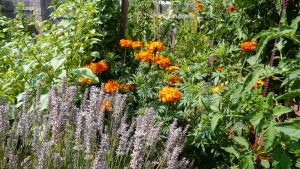 A brief introduction to companion planting for those who are unfamiliar with it: Companion planting is the art of designing your garden with plants co-mingled in such a way that they protect and encourage the overall healthy growth of the garden. First Nations brothers and sisters were way ahead of us on this one (and many other things). What has come to be known as “the three sisters” – corn, beans, and squash – and the often overlooked fourth sister, sunflowers and Sunchokes, is a perfect example of companion planting. How does it work?
A brief introduction to companion planting for those who are unfamiliar with it: Companion planting is the art of designing your garden with plants co-mingled in such a way that they protect and encourage the overall healthy growth of the garden. First Nations brothers and sisters were way ahead of us on this one (and many other things). What has come to be known as “the three sisters” – corn, beans, and squash – and the often overlooked fourth sister, sunflowers and Sunchokes, is a perfect example of companion planting. How does it work?
Corn provides sturdy “poles” for the beans to grow on. The beans make the corn stalks more stable and able to withstand the wind. Additionally, beans “fix” nitrogen into the soil, giving essential growth nutrients to the corn and squash. Finally, the squash provides a “living mulch”, covering the ground with its leaves, keeping weeds down and helping the soil to retain moisture. When spiny squash was used, it also provided a level of protection from pests. This is a bit of an over-simplification, but it still works to illustrate the point.
Like gardens, neighborhoods are designed. Sure, some seem just to be tossed together and ignored, while others are carefully planned out, with neighborhood restrictions meticulously outlined in the CC&Rs (Covenants, Conditions, & Restrictions). Regardless of the neighborhood, we have a choice whether or not we’re going to live as beneficial neighborhood companions or isolated plantings cut off from one another. And this choice, though it will look different depending on the environment, transcends the urban, suburban, and rural divides.
When we choose to live isolated from our neighbors and neighborhood, we are much like industrial farms. This lifestyle requires compartmentalizing life into bite-size, controllable chunks, seemingly independent of one another. Industrial farming focuses on growing one crop (sometimes two) on large plots of land. These mono-crops produce massive amounts of cheap food by paying low wages to farm workers, pouring excessive amounts of dangerous chemicals and artificial nutrients on the soil – depleting topsoil and destroying the community of micro-organisms in the soil which make it rich – then sending this tainted food to big corporate grocery chains that in turn sell it in communities but take the majority of the profits out of the local neighborhood. In both gardening and the marketplace, this is unsustainable and destructive.
Many of our neighborhoods are similarly designed. Single family dwellings of self-sufficiency. Homes bordered by fences and shrubbery. Single-stop “super stores” for quick, one-stop shopping – stores run by big corporations who siphon money out of the community. Our lives have been crafted to fit into neat little boxes with slick marketing to target each separate area of our lives. And it’s easy to slip right into each box as our 24/7 connections to even more boxes leave us exhausted and almost craving more isolation just to feel a sense of peace. But there’s another way, a healthier, more organic option.
What would it mean to live in neighborhoods more like “the three sisters”? On a very basic level, what are the key aspects of this garden relationship that are also central to wholeness and flourishing in the neighborhood?
- Who/what “feeds” your neighborhood with rich nutrients so it can thrive?
- Can you identify people and places that are already present giving life to our community?
- In what ways do you “feed” my neighborhood?
- How might your choices actually drain life and vitality from my neighbors?
- Who/what gives support/strength/stability to your neighborhood?
- Again, can you identify people and places already providing economic, social, and emotional stability?
- How can you partner with what’s already going on here?
- Who/what provides that “living mulch” that keeps your neighborhood weed-free and well watered
- This could be a tough one, but what things are draining life and vitality from your neighborhood? Now the even tougher question: which of these things are “weeds” that need to be extracted, and which are perhaps seen as weeds but are actually good things poorly integrated into the neighborhood? In the garden there are a variety of plants you might want, but they might have a negative impact on each other when planted next to each other.)
- And finally, how do all of these parts of your neighborhood work together to provide a sustainable, healthy, living environment for all its residents? How are they connected?
This last point could (and might be) a whole new post. Beyond the three (or four) sisters, there is the whole soil environment. Within that soil environment is an entire network (literally) of mycelium, the roots of mushrooms that move nutrients throughout the garden and are essential for the garden to thrive and be sustainable. If you’ve ever dug around in the ground and discovered delicate white threads in bunches and branching out all over the place, that’s mycelium!
Why I bring this up is that our neighborhoods, no matter how broken, also have this delicate underlying mass of threads. One of the many issues about gentrification is that it ignores this essential tangle of connections that keep an area alive. As we ask the questions outlined above, it’s imperative that we identify, as best we can. what the “mycelium” in our neighborhood is. How does it work to hold life together? How can we move forward without so disturbing the “soil of our neighborhood” that we fatally damage the “mycelium” that has kept it alive over the years?
- What does your neighborhood look like?
- Does it look differently if you see it as a garden?
- As you look at your neighborhood, what companions are already planted there?
- Can you think of new things that could come alongside what is already present to make them stronger?
I’d love to hear your questions, ideas, and stories!
This post is out of date, please check out our latest resource list here.
May 30th is Ascension day, not a Holy day that I grew up with or one that many protestants are familiar with. This is the fortieth day after Easter Sunday and we are celebrating the ascension of Christ into heaven. You will find the Biblical accounts of the Ascension in Matthew 28:16-20, Mark 16:19-20, Luke 24:50-53 and Acts 1:6-11.
The day is also and, in some ways more importantly, a celebration of the new creation that Jesus’ resurrection brought into being. It seems such an appropriate celebration for those of us who are interested in sustainability and creation care. I prefer to focus on this imagery because so much of the language of ascent seems to focus more on the triumphalism of a militaristic parade rather than the ascent of a servant king whose advocacy will restore and renew all things.
In Sweden people go into the woods very early in the morning to hear the birds at sunrise. It is said to be good luck if a cuckoo is heard from the east or west. What beautiful imagery to carry with us for the rest of the season until Pentecost. I think this would be a wonderful tradition to incorporate in our Ascension Day celebrations. Go out into the woods, your local park or even the beach early in the morning. Listen to the birds singing the dawn chorus. Notice the beautiful sound that rises like a stream of praise and worship to God. If you live in a place where there are few, if any birds plan a trip into the countryside as close to Ascension Day as possible to listen to the birds.
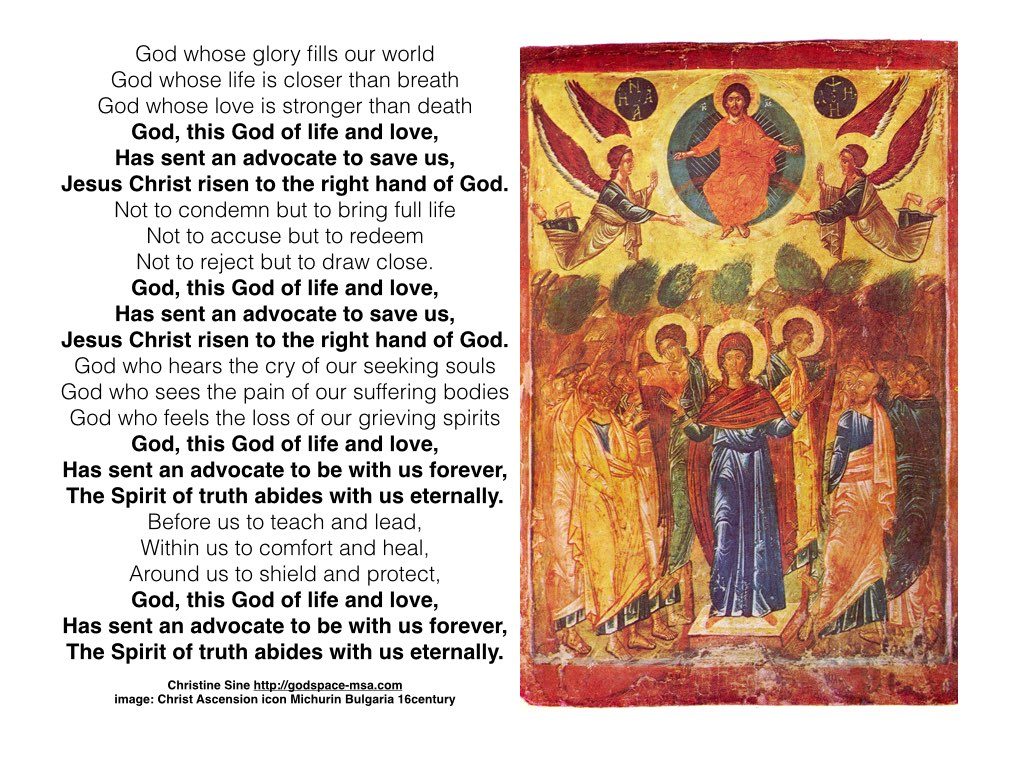 I do not want to deny the exultant triumph of our risen Lord and the freedom his ascent has brought us. For the disciples this must have been an amazing day. They knew Jesus was alive. They knew he was the Son of God and the Saviour of the world, the long-promised Messiah. They knew that they would see him again when he returned, as he had assured them that he would, at the end of time and the day of resurrection. They knew that he still loved them, simply because he appeared to them after he rose from the grave and, most importantly, he had entrusted his mission on earth to them. They had begun to comprehend the nature of God’s love and power; so should we.
I do not want to deny the exultant triumph of our risen Lord and the freedom his ascent has brought us. For the disciples this must have been an amazing day. They knew Jesus was alive. They knew he was the Son of God and the Saviour of the world, the long-promised Messiah. They knew that they would see him again when he returned, as he had assured them that he would, at the end of time and the day of resurrection. They knew that he still loved them, simply because he appeared to them after he rose from the grave and, most importantly, he had entrusted his mission on earth to them. They had begun to comprehend the nature of God’s love and power; so should we.
Ascension Day customs
Various customs are associated with this day. In England, processions used to take place with a banner at the head showing a lion and a dragon at the end, symbolising Christ’s victory over the devil. In some churches the Ascension was re-enacted by lifting the figure of Christ through an opening in the roof of the church.
The Chapel of the Ascension in Walsingham, Norfolk, shows Jesus’ feet projecting from the ceiling.
Another English tradition – beating the bounds – the reaffirming of parish boundaries is a great to reaffirm, possibly as a prayer walk so think of adding it to your Ascension Day observances.
Ascension Day Resources
Celebrating Ascension Day at Home
Looking for ways to celebrate with kids? EverThineHome.com and BuildFaith.org have great ideas!
Most of the resources listed below can also be used or adapted for your at home worship on Ascension Day.
Paul Neeley Resources
A couple of years ago I posted this very comprehensive and helpful list from Paul Neeley for Ascension day. Here are a few more resources he has added since:
- Ascension Reflections (sonnet, song, painting, litany, theology & more!)
- 4 Ascension Artworks from India
A couple more of my own prayers:
Here are some more of my favourite resources:
The United Methodist Church has some great resources. I love the exultant note of this prayer from Rev. Marilyn E. Thornton the Lead Editor for African American,
One: Let us gather as they gathered on the Mount of Olivet.
Let us remember the teachings of the law, psalms, and prophets.Many: Ride on King Jesus, no one can hinder you!
Here is another from the reformed tradition With A Shout
And this by David Diephouse who teaches history at Calvin College
Our God goes up with shouts of joy!
Our Lord ascends to the sound of trumpets!
All: Sing praises to our God, sing praises!
Sing praises, sing praises to our King!
The Almighty rides in triumph.
The Almighty leads captivity captive.
Who shouts for joy? Who blows the trumpet?
The hosts of heaven sing the honor of his name;
they praise him with an endless alleluia.
And this prayer from the Catholic service for Ascension Day
God our Father,
make us joyful in the ascension of your Son Jesus Christ.
May we follow him into the new creation,
for his ascension is our glory and our hope.
We ask this through our Lord Jesus Christ, your Son,
who lives and reigns with you and the Holy Spirit,
one God, for ever and ever. Amen.
As usual, John van de Laar at sacredise.com has some great resources – prayers, liturgies, even suggestions for hymns and youtube videos. You can check them out here.
Here is a good set of videos/loops from re:Worship.
Don’t forget to check out textweek.com which has a very comprehensive list of resources for celebrating Ascension Day
Here are some more images of the Ascension:
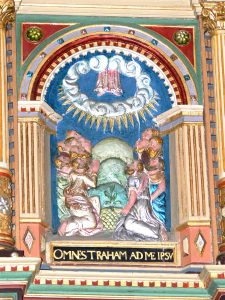
Ribe Cathedral. Pulpit ( 1597 ): Ascension of Christ with the latin inscription “Omnes traham ad me ipsum” ( All people I will draw to myself ) via wikimedia.
Obviously there are lots of other great resources out there too so if you have found something that is particularly helpful please leave a link in the comments below.
By Lisa Graham McMinn
Some mornings Mark and I start the day with a walk up Williamson Road—the country rode that leads away from our home. We’ll pass the hens and beehives on our way out, and our stroll will take us past horses, sheep, cows, alpaca, a donkey, and some friendly dogs. We’ll encounter robins, spotted towhees, finch, sparrows, sometimes a family of partridges that lives in the neighborhood seasonally, and an occasional hawk. I recognize these creatures, along with the people living in the houses along the way, as my neighbors. We belong in a community together that flourishes or not depending on how we humans practice our membership to it. We all will flourish better if we keep the creek and riparian areas around it healthy, and if we hold a good percentage of the land in trees that hold water and keep our soil in place, and cleans our air besides, exchanging oxygen for a good amount of the CO2 our lives expend. Our neighborhood will flourish best if we grow our vineyards, orchards, and vegetable fields in sustainable ways that feed the soil that feeds us all.
Does it feel like a stretch to say that we have a membership in our communities that extends from the soil to the sky and includes all things living in between? Perhaps seeing ourselves as members of broader communities even grounds us deeper in God’s community, encouraging us to live less entitled lives, to use and consume mindfully.
Hold that thought.
I used to ask sociology students if they could make themselves a hamburger without help. Most of them thought so—even if they hadn’t grilled one up before they figured You-Tube videos would help them out. But then I said, “without help means without the internet,” and I followed up by asking where they would get the cow. They realized were having an altogether different conversation than they thought. Without help means figuring out how to obtain, feed, care for, and slaughter a cow, how to grind the meat, make fire, and figure out some sort of way to grill the burger. Putting the burger between a bun raises a whole other set of issues, as does adding condiments—except maybe onion, which one can find growing wild much of the year. By the end of the conversation most of them would settle for a hunk of skewered squirrel or rabbit over an open fire, and self-determination and autonomy of that sort has less appeal.
We belong. However much we want to think we are independent agents, we will not flourish apart from various memberships. Our human memberships generally grant us access to food from the soil that someone planted and harvested, and access to the goods of creatures someone else raised and slaughtered or milked or collected eggs from. As humans we can live in houses built out of trees, consume fossil fuels to keep our lives mobile and varied by food and other stuff shipped across the world to us.
Even if I thought of belonging only for what it does for me, it still bears out that my wellbeing is dependent on the wellbeing of people harvesting coffee beans, the wellbeing of farmers, bakers, dairy workers, of bees, worms, and forests, which all contribute to making my life good.
But membership based primarily on what we get out of it is rather vapid and unsatisfying. The rich life, the good life, the life as God intended it is one lived for the good and wellbeing of others. That my life ends up being more contented, richer, and fuller because of it is the sweet irony of living the servant life that God designed. Acknowledging membership is primarily choosing to live in ways that help the groups to which I belong flourish. It is choosing love and affection over competition and self-seeking. Recognizing that memberships go beyond human communities extends that affection. The truth of the matter is that humans cannot flourish without forming responsible relationships with other parts of God’s creation. Even if motivated by self-interest, embracing our broader membership as citizens of Earth to ensure that our lives flourish will also foster the wellbeing of non-human lives on which we depend.
Perhaps it is okay if self-interest is the initial driving force to be a good neighbor, to live with a desire to see other community members (human and not) flourish so that me and mine continue to do so. But eventually, hopefully, that awareness of dependence on others moves us toward a deep-seeded gratitude from which sprouts a desire for compassion, justice, and the flourishing of all members of this large beautiful earthy community.
All semester long I subtly and not-so-subtly encouraged students (and reminded myself) that we belong to something bigger than ourselves, that we have obligations beyond “being all we can be” and pursuing personal wellbeing and happiness. When we acknowledge our membership into something bigger than ourselves, we can more responsibly participate in a world that functions as God designed it, where we nurture life by eating mindfully, growing food sustainably, using energy wisely, consuming less, and purchasing with an eye toward fostering the wellbeing of neighbors near and far, human and non-human.
At the heart of acknowledging memberships is freedom. We become free from the constraints and burden of self-actualizing as defined by a consumer culture that says more is always better. We become free as we assume the lighter burden to love, to have affection for place, and for living things that share that place with us. We are invited to pay attention and to be filled with gratitude for God who sustains a world (and a food chain) that keeps life moving forward in spite of ways we abuse ecosystems. Perhaps one of God’s strategies for helping Earth flourish in the 21st century is to raise a generation who embrace their membership into all of it—who with counter-cultural voices affirm, I am not what matters most.
Our best response is to live out of affection that roots us in God’s gift of Earth so that we seek to foster the flourishing of life in our daily choices. May we turn away from the glitzy path of a more alienated life and chose the earthy one rich in memberships.
……………………………………………………………………………………………………………….
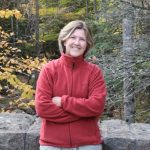 Lisa Graham McMinn, Ph.D., is a Professor of Sociology and Writer in Residence at George Fox University. She writes and speaks about gender and sexuality, creation care, food ethics and agriculture. Her books include, The Contented Soul (IVP 2006), Walking Gently on the Earth (IVP 2010), Dirt and the Good Life: Stories of Fern Creek (Barclay Press 2012) and most recently, To the Table: A Spirituality of Food, Farming, and Community (Brazos Press, 2015).
Lisa Graham McMinn, Ph.D., is a Professor of Sociology and Writer in Residence at George Fox University. She writes and speaks about gender and sexuality, creation care, food ethics and agriculture. Her books include, The Contented Soul (IVP 2006), Walking Gently on the Earth (IVP 2010), Dirt and the Good Life: Stories of Fern Creek (Barclay Press 2012) and most recently, To the Table: A Spirituality of Food, Farming, and Community (Brazos Press, 2015).
Lisa also describes herself as a farmer, Quaker, beekeeper, and sometimes potter. Her job, she says, “is to love Creation–to laugh, hope, nurture, and mostly, to pay attention. So I tend tomatoes and fruit trees, nurture bees and chicks, preserve beans, my grandmother’s traditions, and a more simple way of life.”
Lisa lives on Fern Creek, a small CSA (Community Supported Agriculture) farm outside of Newberg, Oregon, where she and her husband Mark tend chickens and bees and grow food for 24 families. Lisa and Mark’s family includes three daughters, and six grandchildren.
As an Amazon Associate, I receive a small amount for purchases made through appropriate links.
Thank you for supporting Godspace in this way.
When referencing or quoting Godspace Light, please be sure to include the Author (Christine Sine unless otherwise noted), the Title of the article or resource, the Source link where appropriate, and ©Godspacelight.com. Thank you!

